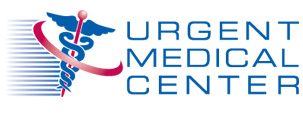 Cold, tingly, swollen or achy hands and feet all indicate poor blood circulation. Treatment for bad blood flow varies based upon the cause, which may relate to diet and lifestyle or an underlying health condition.
Cold, tingly, swollen or achy hands and feet all indicate poor blood circulation. Treatment for bad blood flow varies based upon the cause, which may relate to diet and lifestyle or an underlying health condition.
Poor blood circulation results when your body is not properly circulating blood, oxygen and nutrients to all of your limbs. When blood flow is limited to a particular area you experience symptoms of poor circulation. In most cases, poor blood flow isn’t a problem in itself but instead a symptom of an underlying condition.
How Dangerous Is Poor Blood Circulation?
Blood flow is crucial to support body functions and so inadequate circulation naturally brings about concerns. It may also indicate a more severe underlying condition that requires treatment.
Poor blood flow can contribute to additional problems such as deep vein thrombosis (DVT). DVT can occur when blood flow stops due to poor circulation, causing a deep and painful blood clot to form in the leg. You are at greater risk of developing DVT if you are over 40 and/or overweight.
Reduced blood flow can also lead to chronic numbness and tingling as well as nerve and tissue damage.
The most common symptoms of poor blood circulation include:
-Ice cold hands and feet for no reason.
-Tingling
-Numbness
-A throbbing or stinging pain in your limbs.
-Muscle cramps
-Unexplainable hair loss on legs and feet.
-Toes frequently turn red, purple or blue.
Symptoms may vary slightly depending on the exact cause of poor blood circulation.
Common Causes Of Poor Blood Circulation
There are underlying health conditions that can cause poor blood circulation, but oftentimes it’s something far less serious causing your feet or hands to cramp up, go ice cold or suffer achy pains.
Behaviors that cause poor blood circulation:
-Not eating a proper nutritious diet.
-Smoking tobacco
-Not exercising regularly
-Sitting or standing in the same spot for extended periods of time.
Underlying conditions that cause poor circulation:
Peripheral Artery Disease (PAD) causes poor blood circulation throughout your legs. It is a circulatory condition that causes blood vessels and arteries to narrow.
Blood Clots either partially or completely block the natural flow of blood.
They can develop anywhere in the body, but ones that develop in the arms and legs are prone to causing circulatory problems. They can be dangerous and even life threatening if not caught and treated in time.
Diabetes can lead to poor circulation often characterized by leg cramps, and pain in your calves, buttocks or thighs. You may notice cramping becomes worse during physical exercise.
Varicose Veins are enlarged veins caused by valve failure. Damaged veins, often found on the backs of the legs, appear twisted and swollen. These damaged veins cannot transfer blood as efficiently, leading to poor circulation. Genetics impact your likelihood of developing varicose veins. Women and overweight people are more susceptible to them.
Obesity forces your body to carry around more weight than it’s intended to, putting additional stress on your circulatory system. Obesity puts you at a heightened risk for developing a number of conditions that contribute to poor blood flow.
Raynaud’s Disease is a disease that causes the small arteries in your hands and feet to narrow; as a result blood flow is reduced. This disease commonly causes cold hands and feet, especially when you are in cold temperatures or abnormally stressed.
How To Diagnose Poor Blood Circulation
If you are experiencing symptoms of poor circulation visit Urgent Medical Center today. There are a number of tests we can run to determine if you have poor blood circulation and what’s causing it.
A physical exam may be sufficient to identify the problem. Further testing may be necessary, such as:
-An antibodies blood test to identity inflammatory conditions like Raynaud’s disease.
-A blood sugar test can be used to identify if you have diabetes.
-Blood testing can also show high levels of D dimer indicating blood clots.
-Ultrasound or CT scans
-Blood pressure tests
How To Treat Poor Blood Circulation
Treatment of poor circulation depends on the underlying cause, for instance if you have diabetes you’ll take the measures necessary to treat it, such as taking insulin, which should in turn improve blood flow.
Common treatment methods include:
-Wearing compression socks to help relieve swollen or painful legs and feet.
-Starting up an exercise program in order to naturally improve circulation.
-Laser or endoscopic vein surgery to treat varicose veins.
-Taking medications such as clot-dissolving drugs and/or blood-thinners.
-Alpha-blockers and calcium channel blockers may be prescribed to treat Raynaud’s disease.
-Stop smoking cigarettes.
-Maintain a healthy cholesterol and blood pressure range.
-Use leg massagers or exercise equipment to stimulate blood flow and circulation.
-Get up and move around frequently to avoid long periods of immobility.
-Keep your legs elevated when you sit.




